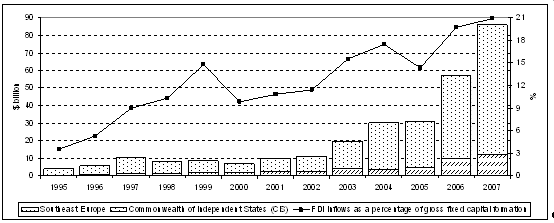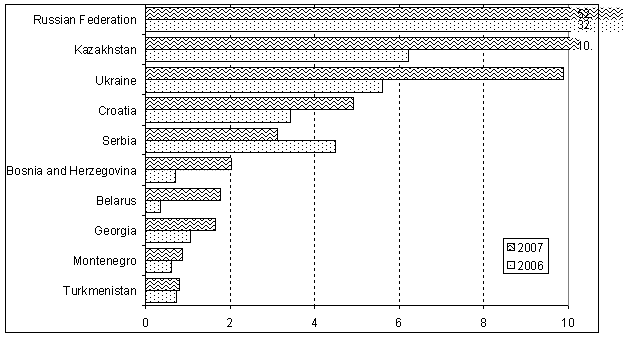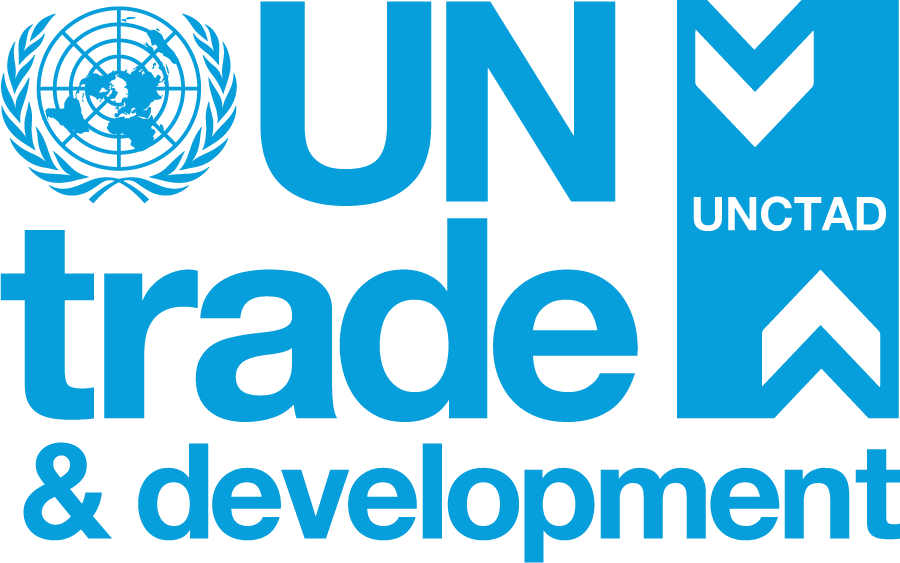| EMBARGO The contents of this press release and the related Report must not be quoted or summarized in the print, broadcast or electronic media before 24 September 2008, 17:00 GMT (13:00 New York, 19:00 Geneva, 22:30 New Delhi, 02:00 - 25 September in Tokyo) |
Geneva, 24 September 2008 - Foreign direct investment (FDI) in South-East Europe and the Commonwealth of Independent States (CIS) rose to US$ 86 billion in 2007, reveals UNCTAD´s World Investment Report 2008(1). This was a 50% increase over 2006, and the seventh consecutive year of climbing foreign investment in the region (figure 1).
UNCTAD´s global investment survey, subtitled "Transnational Corporations and the Infrastructure Challenge," was released today.
Inward FDI flows to South-East Europe and the CIS remained concentrated in a few economies, with the top three recipients - the Russian Federation, Kazakhstan, and Ukraine, in that order - accounting for 85% of the total (figure 2). In the Russian Federation, investment opportunities in energy and other natural-resource-related activities, the fast growing local consumer market, and the removal of restrictions on foreign participation in some local industries, such as electricity generation, drove FDI inflows up by 62%, to $52 billion. Flows to Kazakhstan and Ukraine amounted to $10 billion each. In these countries, the largest investments went into the development of oil and gas fields and into the recently more open banking industry.
Developed countries, mainly members of the European Union, remained the largest sources of FDI to the region. At the same time, transnational corporations (TNCs) from developing countries became increasingly involved in cross-border mergers and acquisitions (M&As).
Although FDI in the services sector was buoyant in 2007, especially in financial services and electricity generation, the primary sector continued to receive the largest FDI inflows. This was despite stricter conditions on entry for foreign investors. In contrast, FDI flows to the manufacturing sector declined overall in 2007. However, there was an increase in the number of greenfield projects -- services or industries new to a country -- in the automotive industry, fuelled by foreign manufacturers´ search for low-cost, highly skilled labour and for access to growing domestic markets.
Outward FDI from the Russian Federation climbed rapidly in 2007, totalling US$ 46 billion. Such investment from the rest of South-East Europe and the CIS was, by comparison, $5 billion. The soaring investment from Russia meant that the region´s total outward FDI more than doubled from the 2006 level. Russian firms are increasingly investing abroad to acquire strategic assets or to gain control of global market segments. For example, the purchase of LionOre Mining (Canada) by Norilsk Nickel for US$ 6.3 billion was the largest foreign acquisition ever by a Russian company. A number of Russian firms are also continuing to increase their downstream presence in the energy industry and their value-added production activities in the metals industries of developed countries. Outward FDI from Kazakhstan grew significantly in 2007, to $3.2 billion, driven by the expansion abroad of the country´s State-owned enterprises in their search for new markets for oil exports and for refineries and new processing technologies.
Whereas most national policy changes in the "transition" countries in 2007 were in the direction of greater openness to FDI, some CIS countries continued to introduce more restrictive policies governing their extractive industries. The Russian Federation approved a long-discussed Strategic Sector Law specifying industries in which foreign investors should be limited to minority participation. In Kazakhstan, a newly approved law relating to natural resources allows the Government to change existing contracts unilaterally if the agreements adversely affect the country´s economic interests in the oil, metals, and minerals industries.
Despite those restrictions, the World Investment Report expects FDI flows to remain buoyant in the near future to large economies such as the Russian Federation, Ukraine, and Kazakhstan.
The World Investment Report and its database are available online at http://www.unctad.org/wir and http://www.unctad.org/fdistatistics |
ANNEX
Tables and figures
Figure 1. South-East Europe and CIS: FDI inflows in value and as a percentage of gross fixed capital formation, 1995-2007
Source:UNCTAD, World Investment Report 2008: Transnational Corporations and the infrastructure Challenge
Figure 2. South-East Europe and CIS: top recipients of FDI inflows, a 2006-2007(Billions of dollars)
Source:UNCTAD, World Investment Report 2008: Transnational Corporations and the infrastructure Challenge
Note:a - Ranked by magnitude of 2007 FDI inflows.


